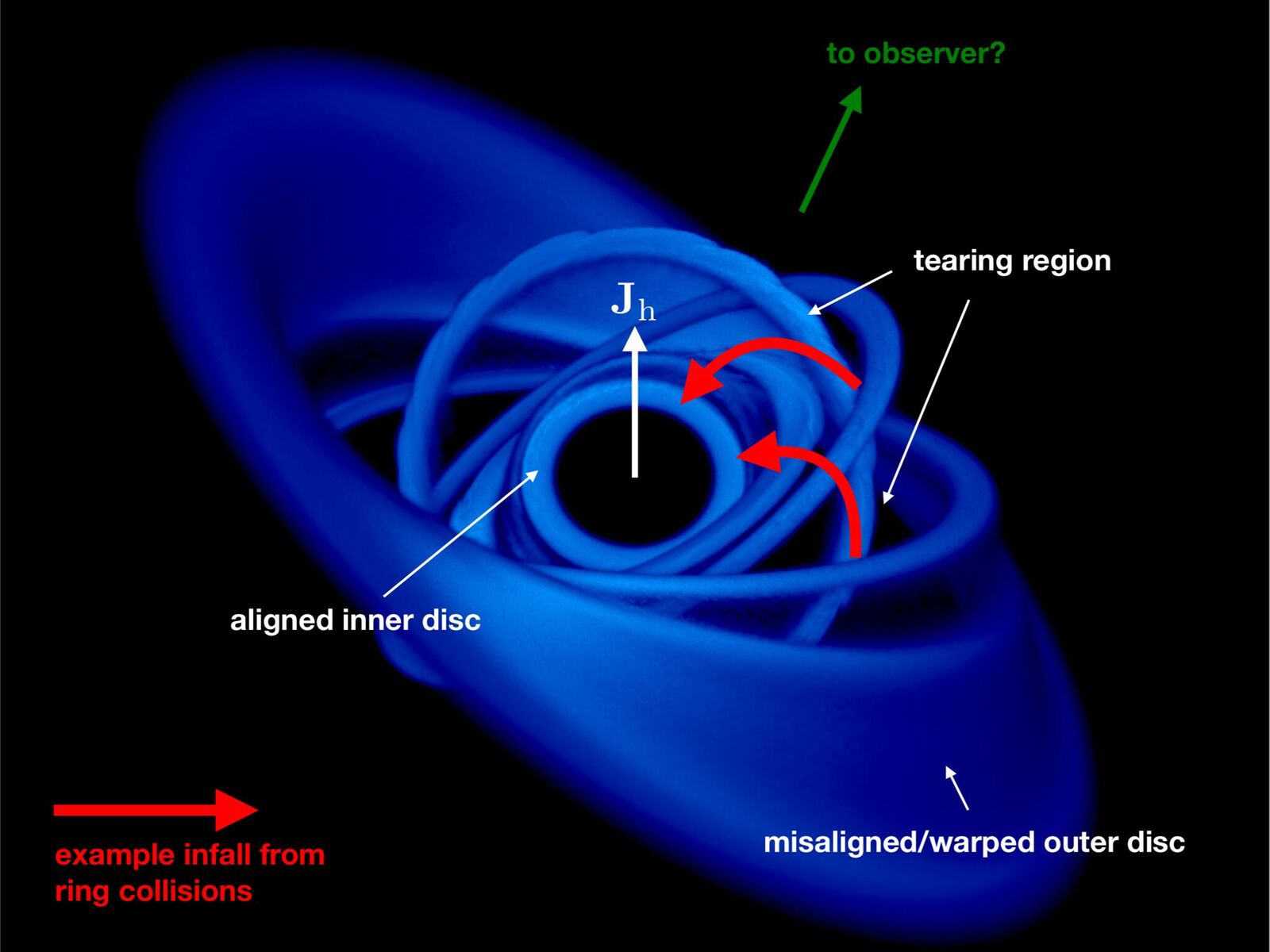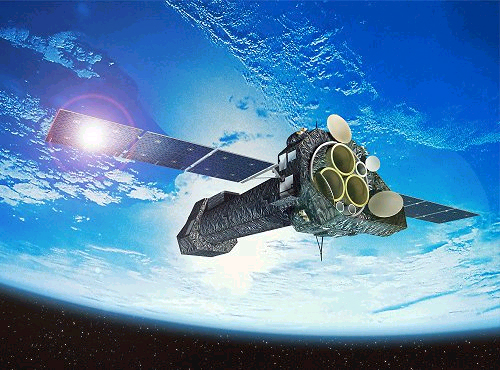The Stuff Falling into This Black Hole Is Moving at Almost 56,000 Miles a Second!
A glob of material the size of Earth is getting sucked into a black hole at nearly one-third the speed of light, a new study reports.
The speed of light in a vacuum is 186,282 miles (299,792 kilometers) per second, and, according to Einstein's theory of special relativity, that's the top speed for anything traveling in our universe. So, something zipping at a third the speed of light is moving nearly 56,000 miles (90,000 km) per second — fast enough to circle Earth twice in that brief time.
The newly observed infall event occurred in the galaxy PG211+143, which is more than 1 billion light-years away from Earth. Astronomers spotted it using the European Space Agency's XMM-Newton space telescope, which observes the universe in X-ray light. [Images: Black Holes of the Universe]

"We were able to follow an Earth-sized clump of matter for about a day, as it was pulled towards the black hole, accelerating to a third of the velocity of light before being swallowed up by the hole," study lead author Ken Pounds, a space physicist at the University of Leicester in England, said in a statement.
The matter reached such incredible speeds because black holes have extremely strong gravitational fields, so strong that even light cannot escape once it goes beyond a critical boundary known as the "event horizon." (That's why they're called black holes.)
There are several types of black holes. The most massive kind, called a supermassive black hole, resides at the core of most if not all galaxies, including our own Milky Way.
If there's enough matter falling into a supermassive black hole, the area shines in superbright X-rays that are visible for long distances. These objects are called quasars, or active galactic nuclei. However, most black holes are too compact to pull such material — which is mostly gas — in immediately. Instead, the stuff orbits the black hole, forming an "accretion disk" as it spirals closer. Eventually, the gas is moving so fast that it gets extremely hot and luminous, generating radiation that we can often see from Earth.
Get the Space.com Newsletter
Breaking space news, the latest updates on rocket launches, skywatching events and more!

"The orbit of the gas around the black hole is often assumed to be aligned with the rotation of the black hole, but there is no compelling reason for this to be the case," University of Leicester representatives wrote in the same statement.
"In fact, the reason we have summer and winter is that the Earth's daily rotation does not line up with its yearly orbit around the sun," they added. "Until now, it has been unclear how misaligned rotation might affect the infall of gas. This is particularly relevant to the feeding of supermassive black holes, since matter — interstellar gas clouds or even isolated stars — can fall in from any direction."
Members of the study team think the gas is indeed misaligned with the black hole's rotation in PG211+143. In such situations, accretion disks can be twisted and torn; some of the various pieces can then slam into each other, "canceling out" their rotation and allowing some gas to zoom directly toward the black hole, rather than swirl around it.
If misaligned disks are common, it could help explain why black holes from the early universe grew big so quickly. Such black holes would spin relatively slowly, allowing them nab more gas in a shorter amount of time than previously thought, researchers said.
The new study was published this month in the journal Monthly Notices of the Royal Astronomical Society.
Follow us @Spacedotcom, Facebook or Google+. Originally published on Space.com.
Join our Space Forums to keep talking space on the latest missions, night sky and more! And if you have a news tip, correction or comment, let us know at: community@space.com.

Elizabeth Howell (she/her), Ph.D., was a staff writer in the spaceflight channel between 2022 and 2024 specializing in Canadian space news. She was contributing writer for Space.com for 10 years from 2012 to 2024. Elizabeth's reporting includes multiple exclusives with the White House, leading world coverage about a lost-and-found space tomato on the International Space Station, witnessing five human spaceflight launches on two continents, flying parabolic, working inside a spacesuit, and participating in a simulated Mars mission. Her latest book, "Why Am I Taller?" (ECW Press, 2022) is co-written with astronaut Dave Williams.









